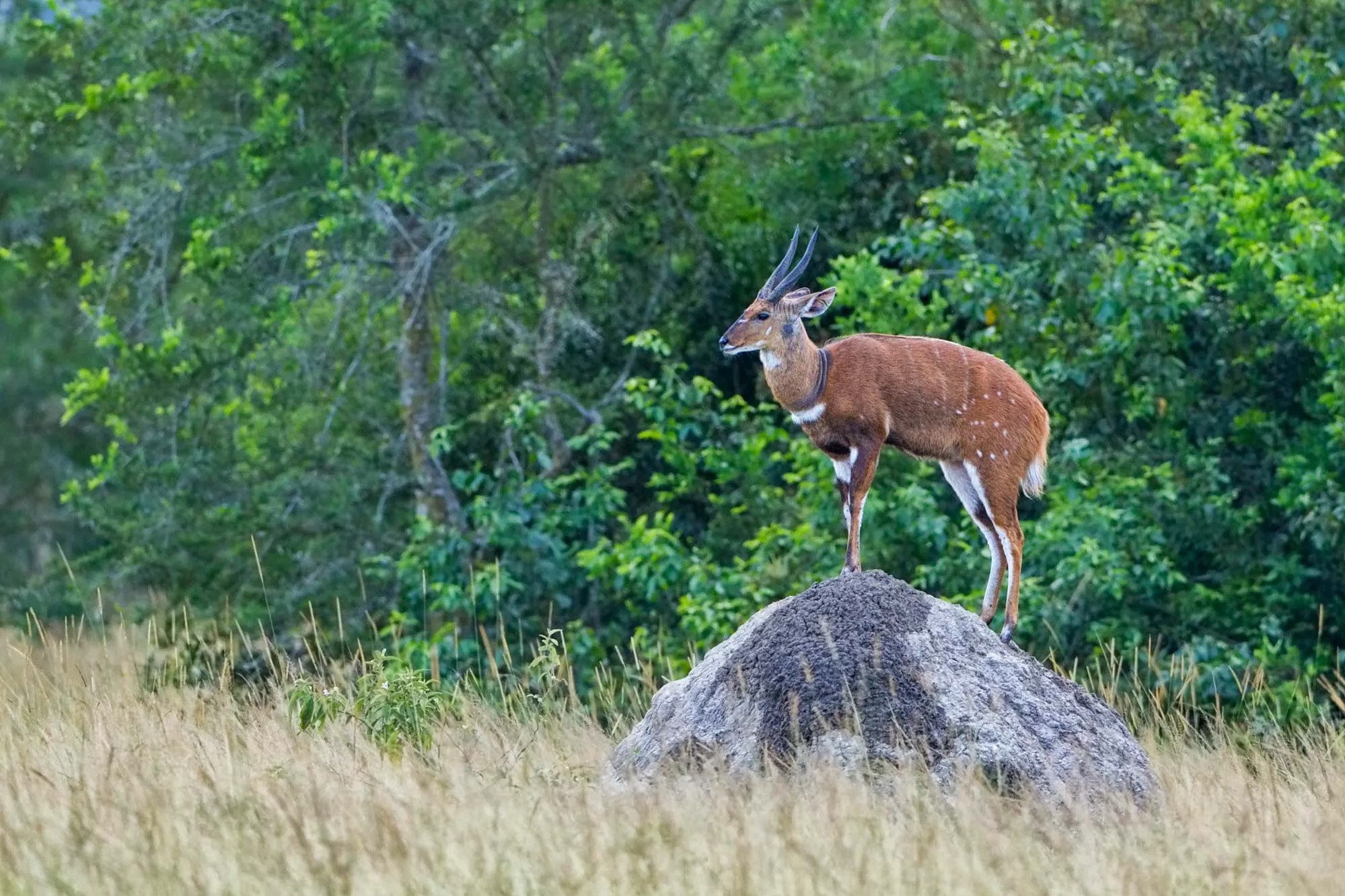Bushbucks in Africa: Majestic Antelopes of the Wilderness
Bushbucks (Tragelaphus scriptus) are captivating and elusive antelopes that inhabit the dense forests and savannas of sub-Saharan Africa. Known for their striking appearance and adaptability, these creatures play a crucial role in maintaining the ecological balance of their habitats. In this article, we will delve into the fascinating world of bushbucks, exploring their physical characteristics, habitats, gestation period, and lifespan.
Physical Characteristics:
Bushbucks are medium-sized antelopes with a robust build and distinctive coat patterns. Typically, males are larger than females, standing at about 80 to 100 centimeters (31 to 39 inches) at the shoulder, while females are slightly smaller. Both sexes feature spiral, corkscrew-like horns that can grow up to 55 centimeters (22 inches) in length.
Their coat exhibits a rich reddish-brown to chestnut color, adorned with white spots and stripes. The underparts are usually lighter, ranging from white to cream. The facial markings include a white stripe running down the nose, and a noticeable white ring encircles each eye, adding to their striking appearance.
Habitat: – Bushbucks (Tragelaphus scriptus) in Africa
Bushbucks are incredibly adaptable, thriving in a variety of environments ranging from dense forests to savannas and woodland areas. They are commonly found in Central, East and West Africa, from Senegal to Uganda and down to South Africa. These antelopes are highly skilled at navigating through thick vegetation, making use of their sharp senses to detect potential threats.
Behavior: – Bushbucks (Tragelaphus scriptus) in Africa
Bushbucks are primarily crepuscular and nocturnal, meaning they are most active during dawn and dusk. This behavior helps them avoid predators while maximizing their foraging opportunities. They are generally solitary or form small groups, and their agile nature allows them to navigate through dense vegetation with ease.
Gestation Period:
The gestation period of bushbucks typically lasts around six to seven months. Female bushbucks, known as ewes, give birth to a single calf, although twins can occur on rare occasions. The newborns, with a spotted coat resembling that of adults, are able to stand and walk shortly after birth. Mothers are highly protective of their offspring, hiding them in concealed locations to minimize the risk of predation.
Lifespan:
In the wild, bushbucks generally have a lifespan of around 10 to 15 years. However, their longevity can be influenced by factors such as predation, disease, and environmental conditions. In captivity, where they are protected from many natural threats, bushbucks can live longer, with some reaching their late teens.
Conclusion: – Bushbucks (Tragelaphus scriptus) in Africa
Bushbucks contribute significantly to the biodiversity and ecological balance of their habitats, showcasing the remarkable adaptability of these antelopes in various environments across Africa. As we celebrate their existence on this occasion of the article’s creation, let’s appreciate the beauty and importance of these majestic creatures in the vast tapestry of African wildlife.








